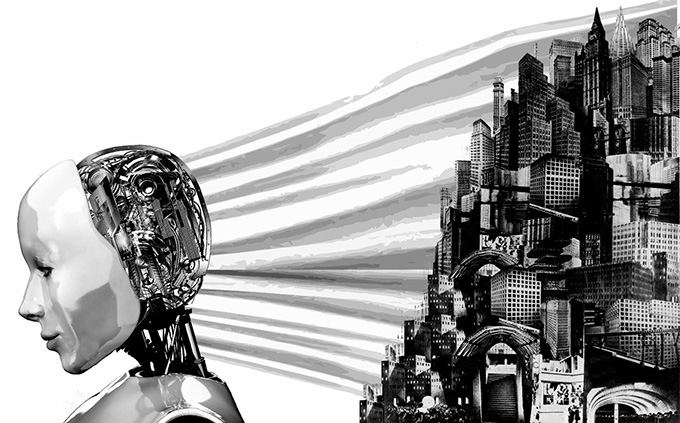
In recent decades, architects have seen how CAD (computer-aided design software) tools have complemented and even replaced freehand drawing. Technology to create 2D plans, 3D modeling, render projects and edit images has become essential for architectural professionals, facilitating communication with colleagues and clients.
Today, artificial intelligence in this field goes beyond aesthetics. Experts point out that AI will not replace entire jobs, but rather will change the tasks performed in them . In architecture, it is not correct to assume that being “creative” will guarantee secure employment, as it is expected that it will take a long time for AI to reach the level of human creativity.
Artificial intelligence in teaching in Architecture
Within the framework of teaching in the Architecture degree, our students begin to use AI, in a surprising way for teachers, to propose project tactics as well as develop unique technical construction details associated with that architectural approach.
How to make creative approaches to architectural projects in an architecture school using AI?
To address this issue, ChatGPT suggests some key steps. First of all, we need to collect data about the client, location, weather and similar projects. Next, it is recommended to use generative design techniques to set specific parameters and constraints that allow the AI to generate multiple creative options and explore innovative ideas.
Additionally, it is important for students to set energy and aesthetic performance goals, using algorithms to refine their designs. The importance of feedback, continuous improvement, and collaboration with AI experts is also emphasized.
However, the question arises whether our students can understand and apply these concepts to improve their architectural projects.
Changes in the main tasks of architects
At the Higher Polytechnic School of the San Pablo CEU University, the final degree projects combine creativity and technique. When we ask an artificial intelligence program developed in 2022 about how to approach a naturalistic architectural project with a posthuman perspective inspired by biobuilders, the answer is general and ambiguous.
The student must investigate and understand the context, analyze how these natural systems work, define the key factors of the project and design taking into account the relationship between humans, nature and technology. Additionally, the importance of considering sustainable design strategies, incorporating structures and facilities, performing a life cycle analysis, and evaluating environmental impact from the design phase to construction is emphasized.
These are essential aspects that any architectural project must address comprehensively. Although its impact in the academic field is not yet fully known , teachers in university education are promoting the use of this tool in a controlled manner to stimulate critical thinking and reasoning, avoiding the simple copying of information provided by the application.
The (r)evolution of AI in Postgraduate Studies
In Higher Education, training varies according to specialization and depth of knowledge. Currently, in creative, technical or graphically focused university programs, such as Architecture, the use of ChatGPT is not very useful. However, in the Postgraduate (Master’s and Doctorate), students can improve their training using AI-based tools.
Several world-renowned universities are adopting AI in multidisciplinary disciplines . There are Advanced Study Programs such as the Master in Advanced Computing for Architecture and Design from the IAAC (Institute for Advanced Architecture of Catalonia) in which work is done with various technologies such as robotics, AI or advanced construction.
At the University of Cambridge, the application of AI in Architecture and building design is investigated in the Computational Architecture and Design Laboratory. The Architecture and Sustainable Environment group at the University of California (Berkeley) focuses on the application of AI in architectural design and sustainable urban planning.
Stanford University has the AI and Robotics Institute, where research is carried out in the field of AI applied to architecture. The Massachusetts Institute of Technology has several laboratories and research groups focused on AI and architecture, such as the MIT Media Lab.
Final thoughts
AI in Architecture education offers exciting opportunities to improve design processes. Helps students generate more ideas and solutions. However, it does not replace critical thinking and human decision making. Future architects must use AI as a tool that expands their graphic and strategic possibilities.
Architecture is a creative and technical discipline that proposes unique solutions to social challenges. Each project is unique. It is important to keep an open mind, explore new ideas and use AI for support. Human work, experience and judgment will continue to be essential in the design process in Architecture schools.
Author Bios: María Eugenia Maciá is Professor in the area of architectural constructions and Jorge Javier Camacho is Professor in the areas of architectural projects and constructions both at CEU San Pablo University
